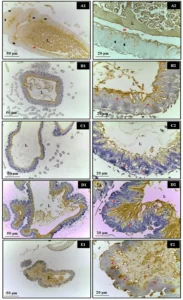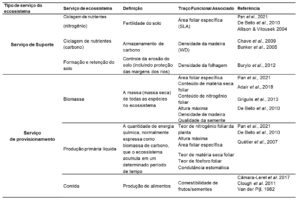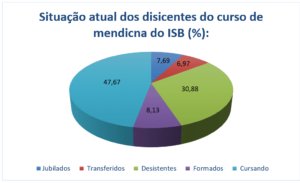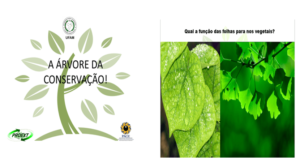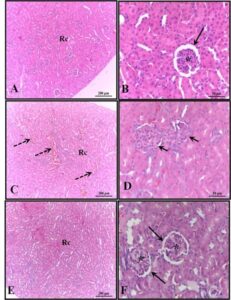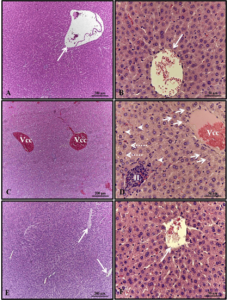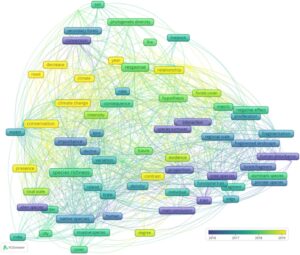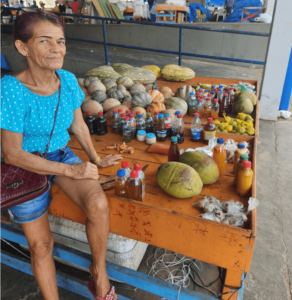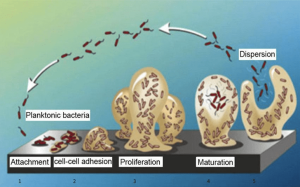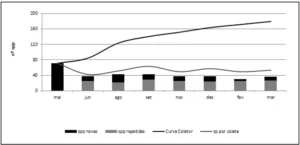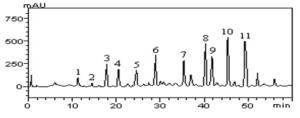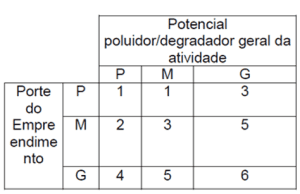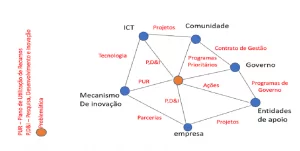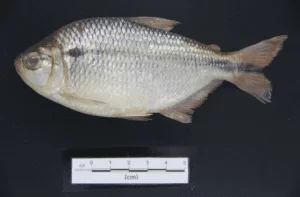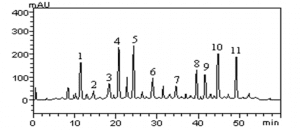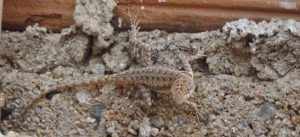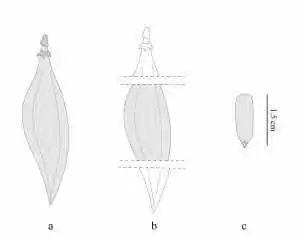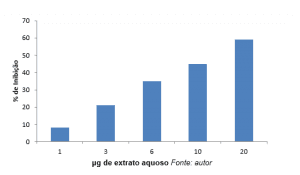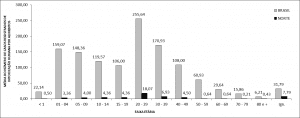ORIGINAL ARTICLE
SILVA, Mireli Petra Santos e [1], RODOVALHO, Luciana Ferreira Fonseca [2]
SILVA, Mireli Petra Santos e. Biotherapeutic blend: an alternative for the treatment of endoparasites. Revista Científica Multidisciplinar Núcleo do Conhecimento. Year 08, Ed. 12, Vol. 03, pp.99-109. December 2023. ISSN: 2448-0959, Acess link: https://www.nucleodoconhecimento.com.br/biology/biotherapeutic-blend, DOI: 10.32749/nucleodoconhecimento.com.br/biology/biotherapeutic-blend
ABSTRACT
Parasitic diseases affecting companion animals include various etiological agents, ranging from protozoa to helminths and arthropods. This variety makes it difficult to develop treatments, which is directly associated with the zoonotic potential of some parasitosis, also posing a risk to the human population. To develop alternatives, diluted, dynamized and natural medicines are being developed, above all to overcome resistance to the usual drugs and represent a sustainable therapy. The aim of this study was to report on the efficacy of a biotherapeutic blend for treating endoparasitosis in different animal species. To this end, after confirming endoparasitosis by fecal examination, the animals were treated with 10 drops of the biotherapeutic blend for 30 consecutive days. To confirm the effect of the treatment, fecal examinations were carried out after 7, 15 and 30 days. A total of 27 animals from 6 different species were included in the study: Canis lupus familiaris, Oryctolagus cuniculus, Felis silvestris catus, Nymphicus hollandicus, Sapajus sp., Mesocricetus auratus. Among the species, the animals were diagnosed with 8 endoparasites in total: Toxocara sp., Isospora sp., Eimeria sp., Ancylostoma sp., Ascaridia sp., Cestoda, Coccidio, Trichuris sp. Treatment with the biotherapeutic blend was able to negate the presence of endoparasites in the feces of different animals, and depending on the type of parasite, the indicated treatment can vary between 30 and 60 days. Thus, the use of this type of biotreatment is an alternative for controlling different endoparasitoses, which makes it a sustainable option with low ecotoxicity.
Keywords: Biotherapeutic, Case report, Endoparasitosis, Parasitic diseases.
1. INTRODUCTION
Arthropods, helminths and protozoa are of veterinary importance because they are widely distributed throughout the world and can cause disease in domestic animals. However, it is important to highlight that some of these parasites have zoonotic potential, also contaminating the owners of these animals (Pereira et al. 2016).
The breeding of non-traditional or exotic pets has been growing in popularity around the world, raising ethical concerns about whether the animal poses any danger, such as in the case of disease transmission (Schuppli et al. 2014). Some of the intestinal parasites in domestic or domesticated animals can affect humans through contamination of the environment by parasite larvae and eggs, as well as close contact with animals; however, many owners are unaware of this risk (Raza et al. 2018). The zoonotic potential of these parasites is exacerbated by the lack of national policies to control the stray animal population and promote responsible ownership, as well as veterinary public health programs (Kamani et al. 2021).
The frequent and inappropriate use of antiparasitic drugs has led to failures in their effectiveness, culminating in a global problem of anthelmintic resistance, by example (Salgado; Santos, 2016; Fissiha; Kindi, 2021). However, diluted and dynamized medicines are part of a scenario in which there is a search for natural, healthy, and less aggressive treatments, aimed at animal welfare and sustainability.
The process of dynamization makes it possible to release energy that is different from the pure substance, which can be measured using physical methods for detecting energy fields. The energy acts on the body by stimulating vital balance, which helps in the healing process and maintenance of organic homeostasis (Braccini et al. 2019). Among the various categories of dynamized medicines are biotherapeutics, which are prepared from the etiological agent itself, known as nosodes (Schmidt, 2021). Nosodes can be obtained from biological products such as secretions, excretions, tissues, organs, products of microbial origin, parasites, and allergens. The use of biotherapeutics as a treatment or prophylaxis for infectious and parasitic diseases has been investigated (Almeida et al. 2008).
Considering that parasites share the same environment as animals and humans, it is possible to contribute to One Health by disseminating the use of a natural treatment against internal parasites in different animal species that do not cause risk to humans, animals, or the environment. The aim of this study was to report on the efficacy of using a biotherapeutic blend to treat endoparasitosis in different animal species.
2. CASE REPORT
This report was authorized by the people responsible for its publication, with a free informed consent form signed in agreement with all the ethical parameters. The study included animals of different species that, after routine veterinary care, had endoparasitosis confirmed by parasitological analysis of feces using direct examination in lugol, flotation and precipitation, with tests carried out in the same clinical pathology laboratory (Table 1).
Table 1. Animals included in the case report and their respective stool parasitology results
| Scientific name | Common name | No. of animals | Fecal parasitology |
| Canis lupus familiaris | Dog | 4 | Toxocara sp.
Isospora sp. |
| Oryctolagus cuniculus | Rabbit | 15 | Eimeria sp. |
| Felis silvestris catus | Cat | 2 | Ancylostoma sp.
Toxocara sp. Isospora sp. |
| Nymphicus hollandicus | Cockatiel | 3 | Ascaridia sp.
Cestoda Coccidio |
| Sapajus sp. | Capuchin monkey | 2 | Ancylostoma sp. |
| Mesocricetus auratus | Hamster | 1 | Trichuris sp. |
| Total number of animals | 27 | ||
Source: Prepared by the authors, 2023.
After confirming the presence of internal parasites, the animals were treated with a biotherapeutic blend consisting of nosodes of Amblyomma cajanense, Ancylostoma spp, Boophilus microplus, Bunostomun sp., Ctenocephalides spp, Dipylidium sp, Eimeria spp, Hemonchus contortus, Isospora spp, Pulex spp, Nematodius sp, Ostertagia ostertagi, Rhipicephalus sanguineus, Strongyloides sp., Toxocara spp., Trichuris sp., Tricostrongylus sp. (ãC12).
The animals were treated with 10 drops added to the water every day for 30 days. The owners were instructed to avoid being near electrical appliances, and strong-smelling products and not to expose them to the sun, heat, and humidity.
On the advice of the veterinarian in charge, the parasitological analysis of the feces was repeated for the cockatiels after 30 days of treatment and, for the other species, the parasitological analysis of the feces was carried out at 7 days, 15 days, and 30 days of treatment for follow-up purposes.
3. RESULTS AND DISCUSSION
The main gastrointestinal parasites found in the fecal parasitology of the animals included in this report were Toxocara sp. which is common in dogs and cats, as well as Eimeria sp. in rabbits. These results corroborate a screening study of pets carried out in the city of Moscow for intestinal parasitic diseases. The study carried out on dogs, cats, chinchillas, ferrets, guinea pigs, rabbits, primates, reptiles, and hedgehogs over a period of 6 years found that toxocarosis was the most frequent helminthic infection in dogs and cats, as was Eimeria sp. in rabbits (Kurnosova et al. 2019). Table 2 shows the results of the tests over the treatment period of up to 30 days.
Table 2. Identification of the animals included in the case report.
| Identificação | Nome cientifico | Sexo | Fezes dia 0 | Fezes dia 7 dias | Fezes dia 15 dias | Fezes dia 30 dias |
| Jade | Canis lupus familiaris | F | Toxocara sp. (+/3+) | Negative | Negative | Negative |
| Vitória | Canis lupus familiaris | F | Toxocara sp. (+/3+) | Negative | Negative | Negative |
| Bebela | Canis lupus familiaris | F | Toxocara sp. (+/3+) | Negative | Negative | Negative |
| Pipoca | Canis lupus familiaris | M | Toxocara sp. (+/3+) | Negative | Negative | Negative |
| Alerquina | Oryctolagus cuniculus | F | Eimeria sp. (+/3+) | Negative | Negative | Negative |
| Luluca | Oryctolagus cuniculus | F | Eimeria sp | Eimeria sp | Negative | Negative |
| James | Oryctolagus cuniculus | M | Eimeria sp (++/3+) | Eimeria sp (+/3+) | Negative | Negative |
| Vitor | Oryctolagus cuniculus | M | Eimeria sp | Eimeria sp | Negative | Negative |
| Chantilly | Oryctolagus cuniculus | F | Eimeria sp | Eimeria sp | Negative | Negative |
| Dálmata | Oryctolagus cuniculus | M | Eimeria sp (+/3+) | Eimeria sp (+/3+) | Negative | Negative |
| Fumaça | Oryctolagus cuniculus | M | Eimeria sp. (++/3+) | Eimeria sp. (++/3+) | Negative | Negative |
| Lui | Oryctolagus cuniculus | M | Eimeria sp. (rare) | Eimeria sp. (rare) | Eimeria sp. (rare). | Negative |
| Jorge | Oryctolagus cuniculus | M | Eimeria sp. (+/3+) | Eimeria sp. (+/3+) | Eimeria sp. (+/3+) | Negative |
| Yulk | Oryctolagus cuniculus | M | Eimeria sp (+/3+) | Negative | Negative | Negative |
| Meg Pi | Oryctolagus cuniculus | F | Eimeria sp. (+/3+) | Negative | Negative | Negative |
| Siamês | Oryctolagus cuniculus | F | Eimeria sp. (rare) | Negative | Negative | Negative |
| Osvaldo | Oryctolagus cuniculus | M | Eimeria sp. (+/3+) | Eimeria sp. (+/3+) | Eimeria sp. (one cyst) | Negative |
| Shadow | Oryctolagus cuniculus | M | Eimeria sp (rare) | Eimeria sp (rare) | Negative | Negative |
| Milk Shake | Oryctolagus cuniculus | M | Eimeria sp (+/3+) | Eimeria sp (+/3+) | Eimeria sp (one cyst) | Negative |
| Gnar | Felis catus | M | Ancylostoma sp. eggs (+/3+) | Negative | Negative | Negative |
| Sophie | Felis catus | F | Ovos de Toxocara sp. (+/3+) | Negative | Negative | Negative |
| Jair | Sapajus sp. | M | Ancylostoma sp. eggs | Negative | Negative | Negative |
| Sérgio | Sapajus sp. | M | Ancylostoma sp. eggs (rare) | Ancylostoma sp. eggs (rare) | Negative | Negative |
| Gigi | Mesocricetus auratus | F | Trichuris sp. eggs | Negative | Negative | Negative |
| Mercedes | Nymphicus hollandicus | F | Ascaridia sp | – | – | Negative |
| Babi | Nymphicus hollandicus | F | Presence of coccidia | – | – | Negative |
| Dólar | Nymphicus hollandicus | M | Cestode eggs | – | – | Negative |
Legend: M: Male. F: Female. Negative: No helminth eggs or larvae or protozoan cysts were observed in the material examined. (+/3+): moderate intensity of parasites identified in the coprological examination. (++/3+): marked intensity of parasites identified in the coprological examination.
Source: Prepared by the authors, 2023.
Considering the animals that initially tested positive for Toxocara sp. and Trichuris sp., it was observed that after 7 days of treatment, the parasitological stool samples were negative, as were the samples from 15 and 30 days of treatment, showing the sensitivity of these endoparasites to biotherapeutic treatment. Toxocara is the zoonotic etiological agent with the highest morbidity in developed and developing countries, mainly affecting children and, despite its widespread distribution, it is considered a neglected infection (Carlin; Tyungu, 2020).
A study carried out in Lavras, MG, with the aim of verifying contamination by Toxocara sp. and Ancylostoma sp. in soil samples collected from public squares and children’s play areas, showed that public squares are the area’s most at risk of potential infection by Toxocara sp. and Ancylostoma sp. This factor was linked to the large population of stray dogs, as well as those that are taken out for walks by their owners (Guimarães et al. 2005). Considering that 58% of Ancylostoma sp. and 23% of Toxocara sp. eggs were found and that these are potentially zoonotic agents, the importance of endoparasitic treatment for dogs and cats should be considered, since this is a situation found in several cities in the country.
It was observed that, after 15 days of treatment, most of the rabbits (n=10) remained with the presence of Eimeria sp. in the fecal parasitology. Species of the genus Eimeria do not infect humans, however, they are of great importance in rabbit breeding, since these coccidias can destroy intestinal cells, causing diarrhea, leading to decreased organic resistance and weight loss, predisposing animals to secondary bacterial infection and, in severe cases, death (Monteiro, 2017). For slaughter rabbits, Eimeria sp. infections are of economic importance as they can lead to major losses in meat production (Szkucik et al. 2013).
It is therefore important to carry out biotherapeutic treatment for Eimeria sp. in rabbits for more than 30 consecutive days, suggesting 60 days of treatment. It should be borne in mind that rabbits coprophagize and that oral infection occurs through the ingestion of sporulated oocysts that may be present in their drinker or feeder. In addition, it is recommended that feeders and drinkers are sanitized daily and that they are placed in such a way as to prevent the animals from defecating inside them, and that the floors of empty cages help to prevent the accumulation of feces and urine (Monteiro, 2017).
The cockatiels treated with the Blend biotherapeutic had different gastrointestinal parasites such as ascarids, coccids, and cestodes, and after 30 days of treatment the results were negative in all cases. It was not possible to check when the animals tested negative, as the veterinarian in charge only indicated that samples should be taken on day 0 and 30 days after treatment.
The presence of Ancylostoma sp. was found in the capuchin monkeys. After 15 days of treatment, the stool test was negative, and this continued in the 30-day sample.
In Spain, dairy farmers have been encouraged to use unconventional treatments to reduce the use of chemical substances, actions that are promoted by regulations imposed by the principles of organic farming (Orjales et al. 2016). The use of diluted and dynamized medicines has been studied as an alternative in the treatment and control of diseases in animals. Some authors claim that anthelmintic resistance has made it difficult to control worms, which justifies the increase in the number of studies to find alternatives to nematode control (Pacheco et al. 2019).
The bond with pets has changed and has a positive effect on human health. However, this change in behavior can have negative effects, such as the increased risk of transmitting zoonotic infections due to the proximity of animals to humans, such as sleeping with animals and contact with the animals’ care environment. The close relationship between humans and animals has led to the One Health initiative, which is a global strategy to expand healthcare for humans, animals, and the environment (Overgaauw et al. 2020). In this sense, the need for deworming is emphasized, which can be done by adopting responsible pet ownership in health education, where the frequency of deworming can be aligned with the risk factor, through clear instructions.
One health is the interconnection of several spheres, considering human health, animal health and the environment. It should be considered that the use of chemical treatment parasiticides on animals can have ecotoxic impacts, as these treatments can penetrate the wider environment and affect non-target species. The use of a biotherapeutic blend proved to be effective in this case report, as feces tests showed the absence of endoparasites in the different animal species. The use of biotherapies aims to use effective, natural and healthy medicines, taking care of animal welfare, human health and sustainability.
4. CONCLUSION
The use of the biotherapeutic blend has proved effective in controlling endoparasites in different animal species, making it a natural and sustainable treatment option. The use of this medicine aims to reduce the impact of ecotoxicity already recognized with the use of chemical products in the treatment of endoparasitosis, which are excreted into the environment.
ACKNOWLEDGMENTS
Thanks to Guia Empreendimentos Inovadores LTDA, and Multiboi Nutrição Animal LTDA for donating samples of the Multipet Animal product – the biotherapeutic blend of choice used to treat the animals and Liliana Borges de Menezes Leite phD for preparing the technical report.
REFERENCES
PEREIRA, André; MARTINS, Ângela; BRANCAL, Hugo; VILHENA, Hugo; SILVA, Pedro; PIMENTA, Paulo; DIZ-LOPES, Duarte; NEVES, Nuno; COIMBRA, Mónica; ALVES, Ana Catarina. Parasitic zoonoses associated with dogs and cats: a survey of portuguese pet owners awareness and deworming practices. Parasites & Vectors, [S.L.], v. 9, n. 1, p. 1-9, 10 maio 2016.
SCHUPPLI, C.A.; FRASER, D.; BACON, H.J.. Welfare of non-traditional pets. Revue Scientifique Et Technique de L’Oie, [S.L.], v. 33, n. 1, p. 221-231, 1 abr. 2014.
RAZA, Ali; RAND, Jacquie; QAMAR, Abdul; JABBAR, Abdul; KOPP, Steven. Gastrointestinal Parasites in Shelter Dogs: occurrence, pathology, treatment and risk to shelter workers. Animals, [S.L.], v. 8, n. 7, p. 108-131, 2 jul. 2018.
KAMANI, Joshua; MASSETTI, Luca; OLUBADE, Toyin; BALAMI, Jimmy A.; SAMDI, Kennedy M.; TRAUB, Rebecca J.; COLELLA, Vito; GONZÁLEZ-MIGUEL, Javier. Canine gastrointestinal parasites as a potential source of zoonotic infections in Nigeria: a nationwide survey. Preventive Veterinary Medicine, [S.L.], v. 192, p. 105385, jul. 2021.
SALGADO, Jordana Andrioli; SANTOS, Clóvis de Paula. Overview of anthelmintic resistance of gastrointestinal nematodes of small ruminants in Brazil. Revista Brasileira de Parasitologia Veterinária, [S.L.], v. 25, n. 1, p. 3-17, 11 mar. 2016.
FISSIHA, Workye; KINDE, Mebrie Zemene. Anthelmintic Resistance and Its Mechanism: a review. Infection And Drug Resistance, [S.L.], v. 14, p. 5403-5410, dez. 2021.
BRACCINI, Graciela Lucca; CASETTA, Jaísa; SILVA, Stefania Caroline Claudino da; CARNIATTO, Caio Henrique de Oliveira; SANTOS, Victor Diogo Rodrigues dos; COSTA, Vinicius Fiorillo. APLICAÇÃO DA HOMEOPATIA NA PRODUÇÃO ANIMAL. Revista Valore, [S.L.], v. 4, p. 310-323, 30 nov. 2019.
SCHMIDT, Josef M.. Similia Similibus Curentur: theory, history, and status of the constitutive principle of homeopathy. Homeopathy, [S.L.], v. 3, n. 110, p. 212-221, 17 maio 2021.
ALMEIDA, Luciana Rodrigues de; CAMPOS, Mônica Caroline de Oliveira; HERRERA, Heitor Miraglia; BONAMIN, Leoni Villano; FONSECA, Adivaldo Henrique da. Effects of homeopathy in mice experimentally infected with Trypanosoma cruzi. Homeopathy, [S.L.], v. 97, n. 02, p. 65-69, abr. 2008.
KURNOSOVA, O. P.; ARISOV, M. V.; ODOYEVSKAYA, I. M.. Intestinal parasites of pets and other house-kept animals in Moscow. Helminthologia, [S.L.], v. 56, n. 2, p. 108-117, 4 maio 2019.
CARLIN, Ellen P.; TYUNGU, Donna L.. Toxocara: protecting pets and improving the lives of people. Advances In Parasitology, [S.L.], p. 3-16, 2020.
GUIMARÃES, Antônio Marcos; ALVES, Endrigo Gabellini Leonel; REZENDE, Glycia Ferreira de; RODRIGUES, Marcelo Costa. Ovos de Toxocara sp. e larvas de Ancylostoma sp. em praça pública de Lavras, MG. Revista de Saúde Pública, [S.L.], v. 39, n. 2, p. 293-295, abr. 2005.
MONTEIRO, Silvia Gonzalez. Parasitologia na Medicina Veterinária, 2 ed. Rio de Janeiro: Roca, 2017. 370p.
SZKUCIK, Krzysztof; PYZ-ŁUKASIK, Renata; SZCZEPANIAK, Klaudiusz Oktawian; PASZKIEWICZ, Waldemar. Occurrence of gastrointestinal parasites in slaughter rabbits. Parasitology Research, [S.L.], v. 113, n. 1, p. 59-64, 8 out. 2013.
ORJALES, Inmaculada; LÓPEZ-ALONSO, Marta; RODRÍGUEZ-BERMðDEZ, Ruth; REY-CRESPO, Francisco; VILLAR, Ana; MIRANDA, Marta. Use of homeopathy in organic dairy farming in Spain. Homeopathy, [S.L.], v. 105, n. 1, p. 102-108, fev. 2016.
PACHECO, Poliana Araújo; MARCONATO, Michael Nunes; REIS, Letícia Liepkaln dos; KATIKI, Luciana Morita; PAZ, Cláudia Cristina Paro de; COSTA, Ricardo Lopes Dias da. Evaluation of Parasitological Homeopathic Complex in the Control of Gastrointestinal Nematodes in Peripartum Sheep. Homeopathy, [S.L.], v. 108, n. 04, p. 248-255, 4 jun. 2019.
OVERGAAUW, Paul A.M.; VINKE, Claudia M.; VAN HAGEN, Marjan A.e.; LIPMAN, Len J.A.. A One Health Perspective on the Human–Companion Animal Relationship with Emphasis on Zoonotic Aspects. International Journal Of Environmental Research And Public Health, [S.L.], v. 17, n. 11, p. 3789, 27 maio 2020.
[1] Student of Veterinary Medicine at the Pontifical Catholic University of Goiás (PUC Goiás), Goiânia, Goiás, Brazil; Complete high school. ORCID: https://orcid.org/0009-0004-7802-5977.
[2] Advisor. PhD in Health Sciences, Federal University of Goiás, UFG, Brazil. Master’s degree in Pharmaceutical Sciences, Federal University of Goiás, UFG, Brazil. Degree in Pharmacy, Federal University of Goiás, UFG, Brazil. ORCID: https://orcid.org/0009-0000-4185-0587. Currículo Lattes: http://lattes.cnpq.br/8587008150039543.
Submitted: October 3, 2023.
Approved: October 31, 2023.

